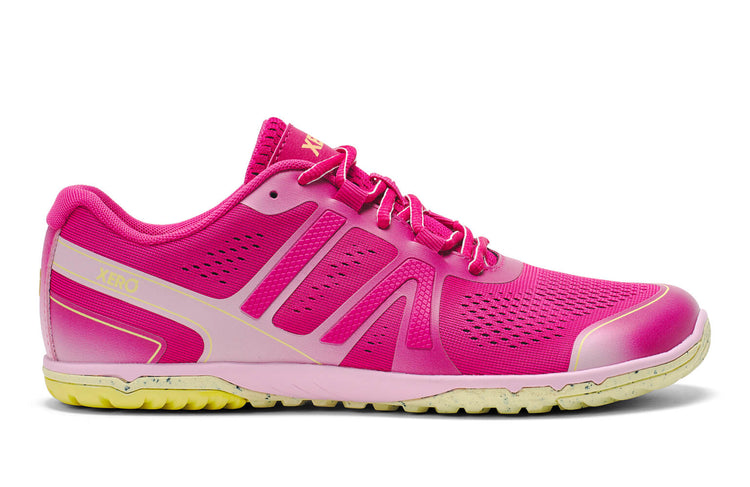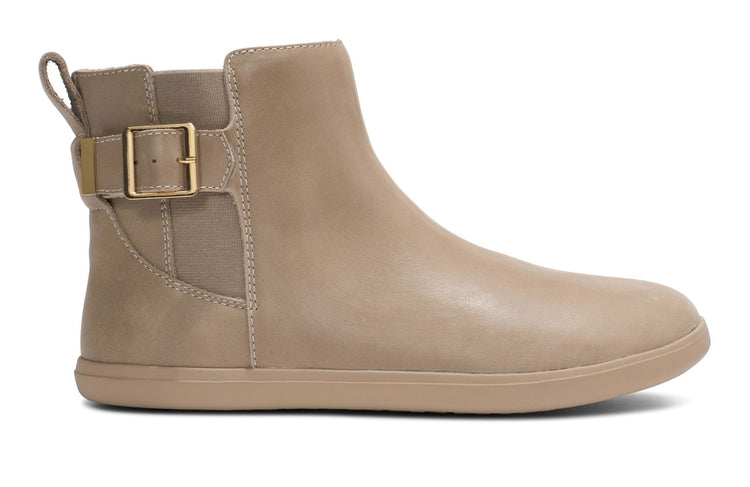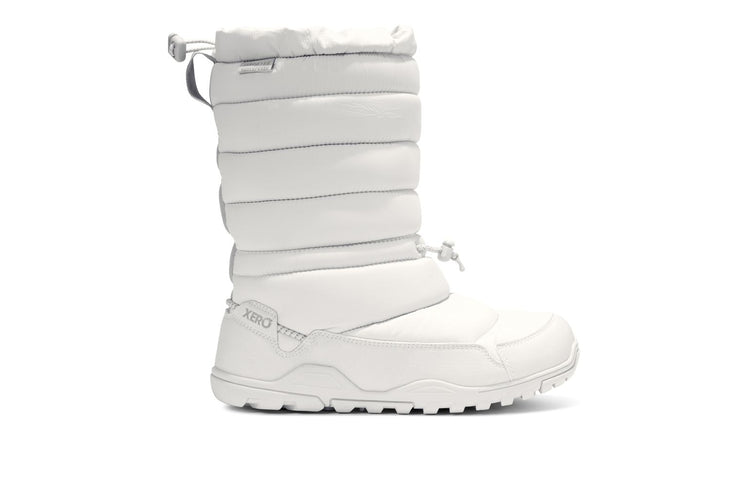
Giving birth is something that is both incredibly difficult and amazing. Despite the level of complication of pregnancy and birth, it may take a while to get back to feeling like yourself and regain pre-pregnancy form. The changes in the pelvic floor that result during pregnancy and after childbirth can make it challenging to return to running.
Postpartum running can — and should — be a slow and gradual process. Running too fast, or too much, too soon, can put postpartum runners at a higher risk of injury. It can also contribute to pelvic health issues that can result after giving birth.
For mom runners, rebuilding the pelvic floor and core after giving birth will be vital. If you want to reach your pre-pregnancy goals, it may take some time and patience. Incorporating exercises that target your pelvic floor muscles can help you return to running safely.
Understanding Postpartum and Your Pelvic Floor
The pelvic floor is a very important part of the body. Women who are pregnant or postpartum have a weakened pelvic floor, which can bring about health issues and risk factors that can impact daily life. A few signs and symptoms of pelvic floor dysfunction are:
- Urine leakage
- Painful intercourse
- Fecal incontinence
- Difficulty pooping
- Prolapse
- Pelvic pain
- Low back pain
- Heaviness, pressure, or bulging in the low pelvis
These symptoms can be frustrating to deal with and can be embarrassing or awkward to have a conversation about. Unfortunately, these health issues can intensify when running, putting pressure on the pelvic area and the muscles of the pelvic floor.
What happens to the pelvic floor during the course of pregnancy and postpartum? Here’s what postpartum runners should know.
Hollie Neujahr, N2 Physical Therapy,
What changes in the pelvic floor occur during pregnancy and after childbirth?

“To understand changes to the pelvic floor during pregnancy and after childbirth, we have to think about how the entire body changes, since the pelvic floor is in the center of it, and interacts with almost everything we do.
For example, during pregnancy, the uterus becomes an abdominal organ, the linea alba expands and may separate (called diastasis recti), the thoracic and lumbar spine change, and this impacts breathing patterns, walking patterns, and more. Then after delivery, everything is attempting to just ‘go back’ to the way it was, especially the pelvic floor, often without any guidance or help.
The pelvic floor, as this central and very important part of our core, is automated to react to changes in intra-abdominal pressure, part of our mechanisms for bowel and urinary continence, engaging in and enjoying sexual activity, providing support to our organs, responding to perturbations in the body and intra-abdominal pressure changes.
To understand potential changes in the pelvic floor during pregnancy, visualize that this muscle group has to work harder just to maintain its minimum physiological obligations, but also the adjustments the pelvic floor needs to make during pregnancy, delivery, and then healing afterwards.
Depending on the type of delivery a woman chooses and if this results in tearing, c-section incisions, and the various requirements for healing, there is a large list of potential changes that may result.”
What are some potential challenges women might develop due to changes in the pelvic floor as a result of pregnancy, delivery, and postpartum?
“Because the pelvic floor is hard wired to work with the diaphragm, shoulder and hip flexion, the abdominal muscles, and the low back and be a meaningful part of the entire body, challenges with the pelvic floor might be due to both direct structural and functional changes and indirectly affect how the muscle group interacts with the rest of the body.
Some pelvic floor problems may be more acute, and related to delivery itself, such as tearing, healing needs, c-section scar healing, for example.
More functional potential problems may be difficulties regulating intra-abdominal pressure, offering the same strength in endurance for support and activities, all of which can lead to urinary leakage during activity, or sneezing and coughing.
Sometimes imbalances in the muscle groups as they try to restore and work with the rest of the body can lead to tightness or spasms that result in urgency, frequency of urine, bowel problems, and different types of pain syndromes (pain with sex, low back pain, pelvic girdle pain, or more).”
What are some postpartum return-to-run tips to reintroduce running safely and prevent pelvic floor problems from occurring?
“I’d recommend seeing a pelvic floor specialist who can work collaboratively with other pelvic health providers and can continually educate patients on how to manage pelvic floor problems related to pregnancy and postpartum.
A proper evaluation would include pelvic floor, spine, movement, trigger point assessment, and pulling together the big picture as described in the prior sentences. This helps especially with sneaky stress incontinence, mostly during running, because training the pelvic floor alone won’t solve this problem: the pelvic floor also needs to relearn how to work with the rest of the body in higher-level activities.
For runners, if you have a larger body or higher severity of symptoms, this is crucial to prevent long term problems and have a guided approach to returning to running safely.
If you have just delivered and feel ready to start running, do your “checks” on yourself to see what your body needs and work into a good program. Do a self-diastasis recti check, and if you’re willing, do a pelvic floor general assessment externally to see if there is any tension that needs help.
Ask yourself how your body feels working together doing standing marches, and practicing ‘static running’ while working on your breathing. Are you able to feel the core tighten, and the pelvic floor tighten? If everything feels healthy to you, and you do not have any symptoms, then set reasonable expectations based on your running history, and set up a healthy interval program to get back into the wonderful sport of running that we all love!”
Strengthening the Pelvic Floor for Postpartum Runners
Many postpartum runners are eager to get out and start running after giving birth. However, before returning to run so quickly after birth, it may help to focus on strengthening the pelvic floor. But how do you train a muscle you can’t see?
The pelvic floor muscles have stretched for nine months and the body will benefit from prep work prior to taking your postpartum first run. Here are some important tips from postpartum fitness experts to help new mom runners rebuild core and pelvic floor strength.
How can postpartum runners navigate common challenges when returning to run after childbirth?
Celeste Goodson, ReCORE Fitness

- See a pelvic floor physical therapist early postpartum: “Yes, you can start core and pelvic floor reconditioning before the 6-week OBGYN check-up. Basic breathing exercises can be started the first week, and postnatal exercise programs can begin as early as 3 weeks postpartum with health provider clearance. Pelvic floor physical therapists can help ensure you can isolate the pelvic floor, assess pelvic floor function, and assess any possible pelvic injuries. Return-to-run timelines will vary due to history, hormones, various delivery complications, and individual circumstances.”
- Build core and pelvic floor strength, expand to full body strength: “A good program will include full range of motion, eccentric/isometric and concentric core/pelvic floor exercises plus a lumbo-pelvic-hip strength and stability focus.”
- Gradually introduce impact, duration and intensity: “Oftentimes with runners, the heart and legs are ready for higher impact before the pelvic floor is. Begin with walking and building the core/pelvic floor base. Expand to low-impact cross training, lower limb strength training, short easy run/walk hill repeats, and easy run/walk intervals before doing your first run.”
- Sleep & nutrition: “Getting back to higher mileage requires good sleep and nutrition, which can be challenging postpartum, especially if breastfeeding. Runners need to make sure they are getting enough nutrition and sleep to reduce their risk of bone stress injury.”
Laura Hmelo Jawad, Laura Jawad Fitness

- Be patient. “Postpartum bodies are not ready to jump right back into running after giving birth. A lot of injuries occur simply because folks do too much too soon. Here’s a rough timeline for returning to run after pregnancy: Take at least 6 weeks to rest and recover from birth. Get in shape to run. Spend 8-12 weeks rebuilding core, pelvic floor and full body strength. Ease back in. Return to running with a run-walk program. Keep in mind, every body and every recovery is unique. This timeline may vary.”
- Consult with a pelvic floor physical therapist. “These are the medical professionals who are qualified to evaluate your readiness to return to run. They will evaluate your pelvic floor strength and function and help you rehab any issues that may have arisen during pregnancy and childbirth. Your 6-week OB check-up isn’t enough. You can book your pelvic floor PT appointment for the same time frame.”
- Understand that leaking and pelvic floor discomfort aren’t normal. “If you’re peeing when you run, or if you’re experiencing pelvic pain or pressure, you will benefit from professional guidance. Reach out to your pelvic floor physical therapist.”
-
Get fit for new shoes! “Feet can change size during pregnancy and running in poor-fitting shoes can lead to injury. It’s worth getting a new pair fit postpartum.”
What are some easy at-home exercises for postpartum runners to regain pelvic floor strength and function?
Celeste Goodson, ReCORE Fitness
- Week 1-3: Diaphragmatic Breaths + Max Isometric Holds“This helps regain full range of motion with the core & pelvic floor as well as improve coordination and the ability to generate stiffness in the muscles. This exercise can be done lying down, sitting, or standing.”
-
After Week 3: Postpartum Hip Twist – 2 x 10 each leg.
“This helps regain full range of motion in hips as well as challenge single leg stability and control. Hold on to the counter to make this easier. If using a band, make sure the band is tight. Bend forward at hips. Rotate open hip up and down slowly. Get as much range of motion as you can.”
-
After Week 3: Wall Bridge Knee Drive – 2 x 10 each leg.
“This helps strengthen hip flexors, glutes, and hamstrings while introducing a single-leg running motion without impact. Go slow at first, and add the mini-band to make it more challenging. With both feet on the wall and hips up in the bridge position, drive one knee up at a time.”
Laura Hmelo Jawad, Laura Jawad Fitness

-
The Connection Breath“The connection breath is a diaphragmatic breath coordinated with a kegel. This exercise retrains the coordination between the muscles of your deep core and prepares them to fire reflexively during activity. Set up by laying on your back with your knees bent. On the inhale, focus on expanding your rib cage 360 degrees (like an umbrella opening) and allow your abdomen and pelvic floor to expand and relax. On the exhale, blow air out through pursed lips and gently contract the pelvic floor; as you empty your lungs, you should feel your deep abs kick on.”
-
Hip Hinge“The hip hinge helps restore length to the glutes and pelvic floor, muscles which, believe it or not, become short and tight during pregnancy. It also builds strength through the glutes. Begin by standing with feet hip distance apart and rib cage stacked over the pelvis. Maintaining the connection between the rib cage and pelvis, hinge at your hips and send your butt straight back towards the wall behind you. Most of the flexion happens at the hips but allow your knees to bend slightly over your midfoot. In the lower position, you should feel a stretch through the glutes and hamstrings. Try inhaling as you sit back, exhaling as you stand.”
-
Drop Landings“Drop landings are a great exercise for practicing quick contractions of the pelvic floor and preparing the pelvic floor to absorb impact forces. Begin the exercise by standing tall on the balls of your feet with your rib cage stacked over your pelvis. Exhale and pre-contract the pelvic floor as you quickly drop into a hinge. Inhale to reset.”
Working With a Pelvic Floor Physical Therapist
Pelvic floor physical therapy is a specialized form of PT that treats pain, weakness, and different types of dysfunction in the pelvic floor muscles. Working with a professional pelvic floor physical therapist, you can develop a safe return-to-run program that is tailored to you and your running goals.
Closing Out: Your Approach to Postpartum Running
Running too soon after giving birth can put postpartum runners at a higher risk of injury and contribute to pelvic health issues. Keep these tips in mind when you begin running:
- Be patient. Don’t rush into postpartum running.
- See a pelvic floor physical therapist to create a postpartum return-to-run plan.
- Know the signs of pelvic floor dysfunction.
- Make some time to rest and recover
- Listen to your body!
Your Shoes Can Affect Your Pelvic Floor
Perhaps the most neglected part of the body during pregnancy and postpartum is the feet. Your choice of postpartum footwear can contribute to your pelvic health. Shoes with a narrow toe box can pinch your toes, cause your feet to not stabilize your body, and may cause imbalances and tension in the pelvic floor.
Minimalist footwear provides your feet and toes with ample room to splay, which may improve foot strength, balance, and posture. We have a wide range of women’s barefoot running shoes and all types of footwear, from fitness to casual.
You can learn barefoot running tips and techniques here.
About The Contributors
Laura Hmelo Jawad
As a pregnancy and postpartum personal trainer and birth doula, Laura Jawad helps people feel strong and confident in their changing bodies.
Laura’s journey navigating her own pregnancies and difficult postpartum recoveries opened her eyes to major gaps in care offered to birthing parents. She left her role as a PhD-trained scientist to become the coach and resource she needed during those vulnerable years.
Today, Laura does more than simply program workouts. She helps people recognize pregnancy and postpartum as pivotal opportunities to grow strong and thrive. As a coach and a content expert with over five years exclusively focused on pregnancy and postpartum, she’s on a mission to de-stigmatize conversations around birthing bodies and pelvic health. Laura holds certifications as a Girls Gone Strong Certified Pregnancy and Postpartum Coach and as a Certified Pregnancy and Postpartum Athleticism Coach.
Celeste Goodson
Celeste Goodson is the owner of ReCORE Fitness is a Certified Medical Exercise Specialist (includes pre/post natal) & USATF Level 1 Track Coach and has worked in health and fitness settings for over 15 years; including physical therapy clinics, cardiac rehab and aquatic therapy. She developed ReCORE program and FITsplint (patented dual strap maternity and postnatal support) and has trained pre/post natal women the last 12 years, from recreational to elite and Olympic athletes, specializing in helping women regain core/pelvic floor coordination, strength, stability and function, helping them return to running.
Hollie Neujahr
Dr. Hollie Neujahr is the owner of N2 Physical Therapy, LLC and the Sisu Practice. Hollie has extensive continuing education and certification in order to focus on and teach others how to help patients in chronic pain, who are active and seeking to continue their physically demanding passions with less pain, improved strength, confidence and resilience. Being an avid, dedicated runner herself, she is also passionate about helping this population heal from injury. She teaches the skills to build strength, stability, quality movement, confidence and endurance, mentally and physically, to enhance running performance.
The content of this post does not constitute and is not intended to be a substitute for professional medical advice, diagnosis or treatment. Always seek the advice of a physician or other qualified health provider with any questions or concerns you may have about your health or a medical condition.





